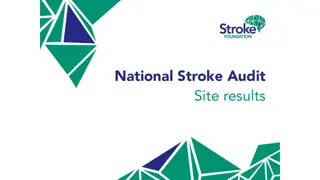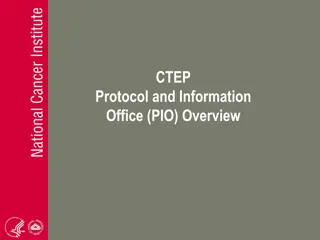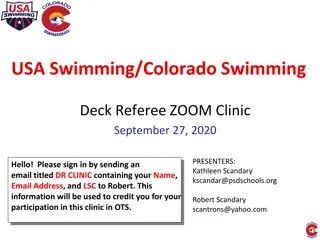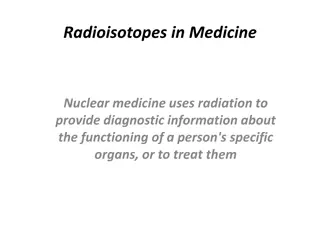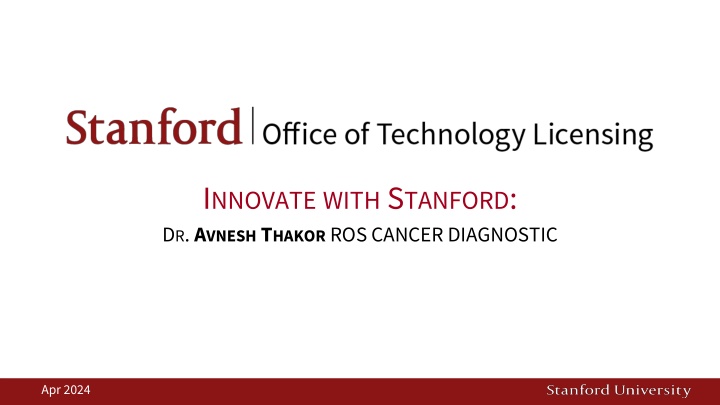
Stanford Cancer Diagnostic Innovation by Dr. Avnesh Thakor
Stanford's Interventional Radiology Innovation led by Dr. Avnesh Thakor focuses on precision therapies and diagnostics in cancer. They have developed a novel gold nanoparticle for imaging tumor oxidative stress, utilizing surface-enhanced Raman scattering technology. Stanford is seeking licensees, research partners, and investors to commercialize and support this groundbreaking technology.
Uploaded on | 1 Views
Download Presentation

Please find below an Image/Link to download the presentation.
The content on the website is provided AS IS for your information and personal use only. It may not be sold, licensed, or shared on other websites without obtaining consent from the author. If you encounter any issues during the download, it is possible that the publisher has removed the file from their server.
You are allowed to download the files provided on this website for personal or commercial use, subject to the condition that they are used lawfully. All files are the property of their respective owners.
The content on the website is provided AS IS for your information and personal use only. It may not be sold, licensed, or shared on other websites without obtaining consent from the author.
E N D
Presentation Transcript
INNOVATE WITHSTANFORD: DR. AVNESH THAKOR ROS CANCER DIAGNOSTIC Apr 2024
Interventional Radiology Innovation at Stanford (IRIS) Dr. Avnesh Thakor, MD, PhD Adult and pediatric Interventional Radiologist and Physician-Scientist Member, Royal College of Radiologists Fellow of the Society of Interventional Radiology Focus on precision therapies and diagnostics 2
S19-246: A Novel Surface Enhanced Ramen Scattering Gold Nanoparticle for Imaging Tumor Oxidative Stress Summary: Reactive oxygen species (ROS)- sensing nanoparticle for use in cancer detection - comprised of a gold core (AuNP), DHR123 Raman layer, mesoporous SiO2 shell, and cysteine knot peptide. The cysteine knot peptide targets integrin alpha B beta 6, which is overexpressed in several cancers. The technique is called surface enhanced Raman scattering (SERS). Patent: PCT published 2020 Publication: J. Biomed. Nanotechnology, 2019 Stage of Development: In vivo data
What Stanford is seeking: Licensees to commercialize this technology Research partners/sponsors to develop and commercialize this technology Investors to help fund and support the creation of a start-up company around this technology 4
Contact Us 415 Broadway Street, 2nd Floor, Redwood City, CA 94063 otl.stanford.edu otl-connect@stanford.edu SPOTLIGHT Newsletter SPOTLIGHT Newsletter 5




